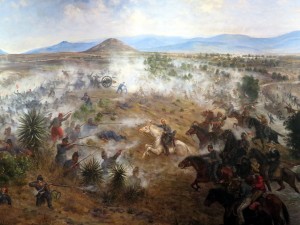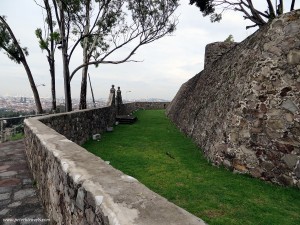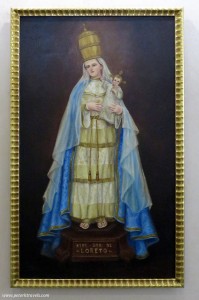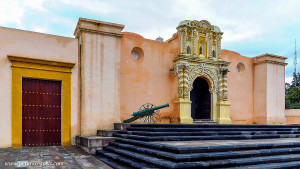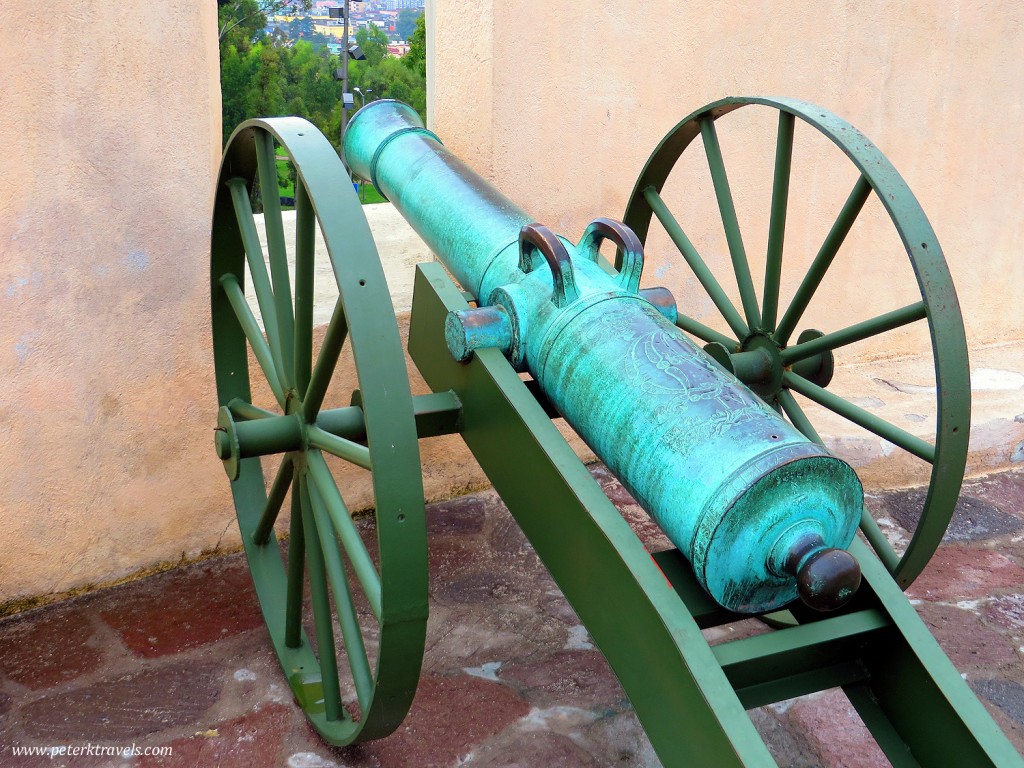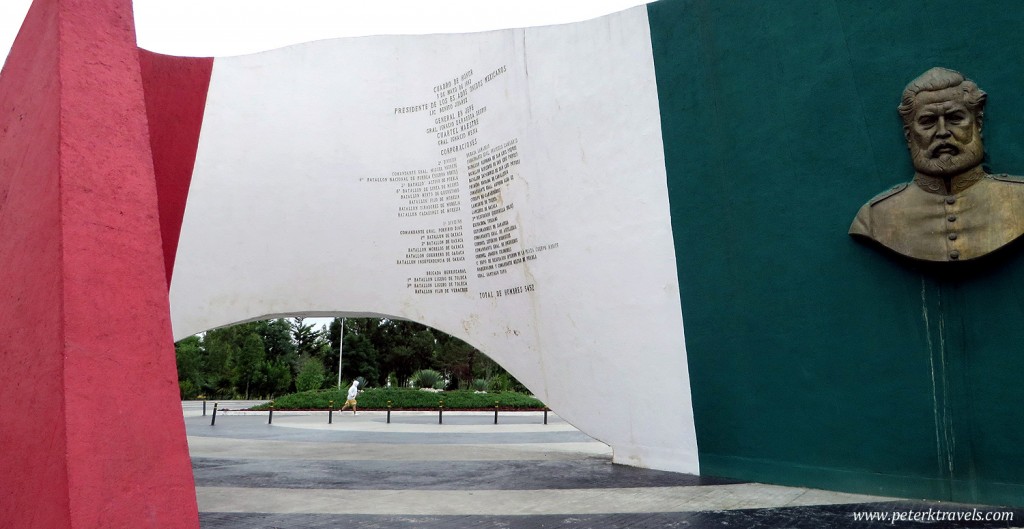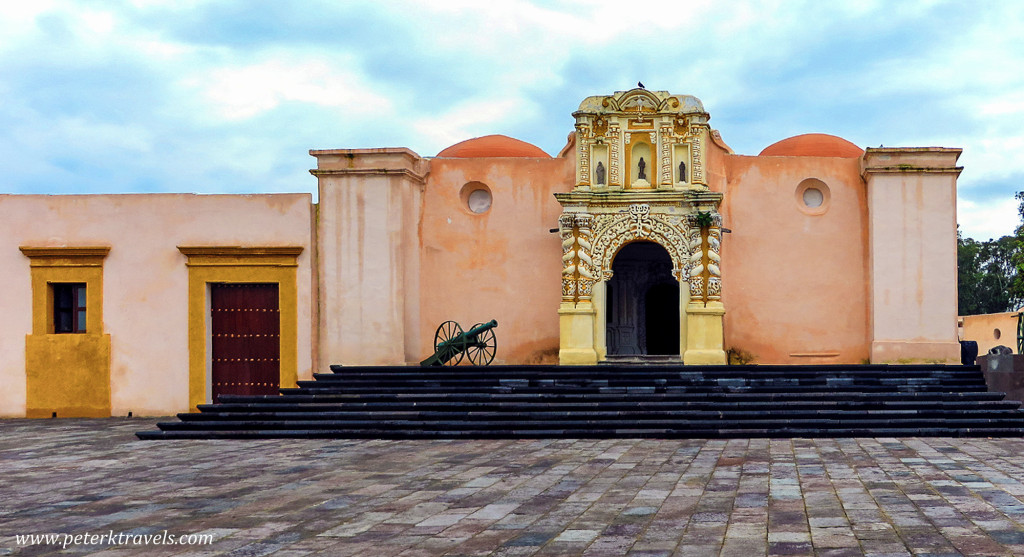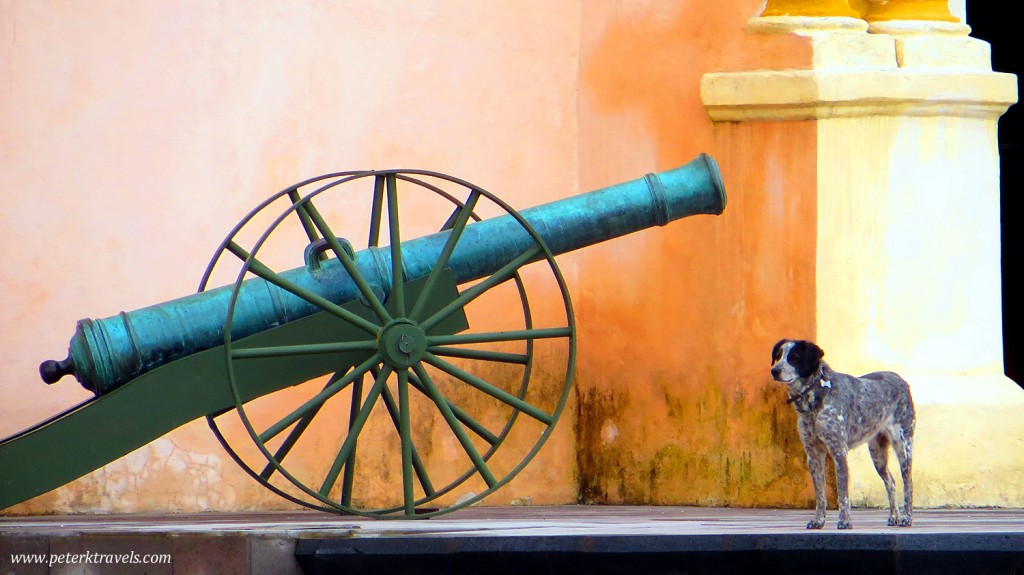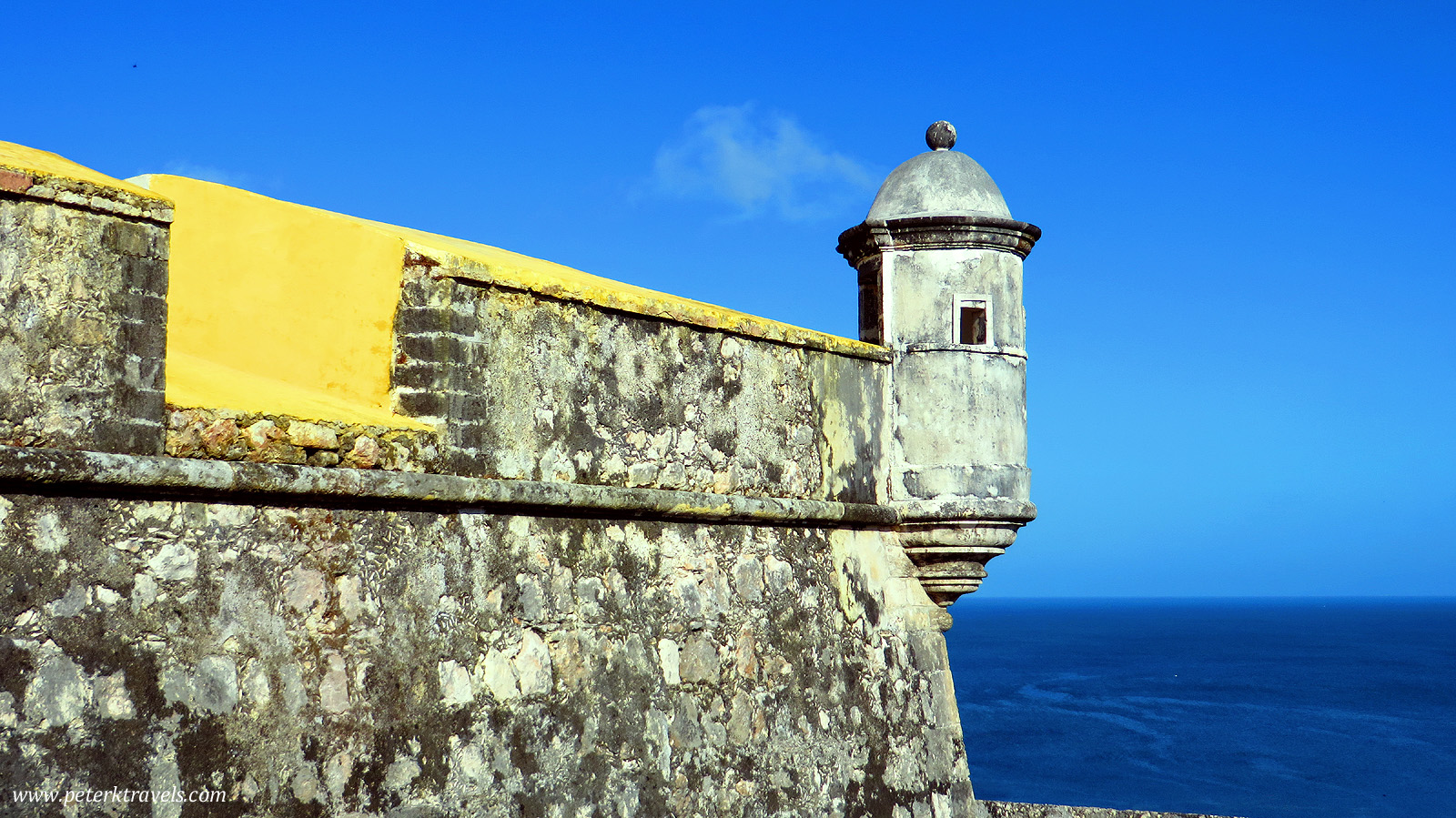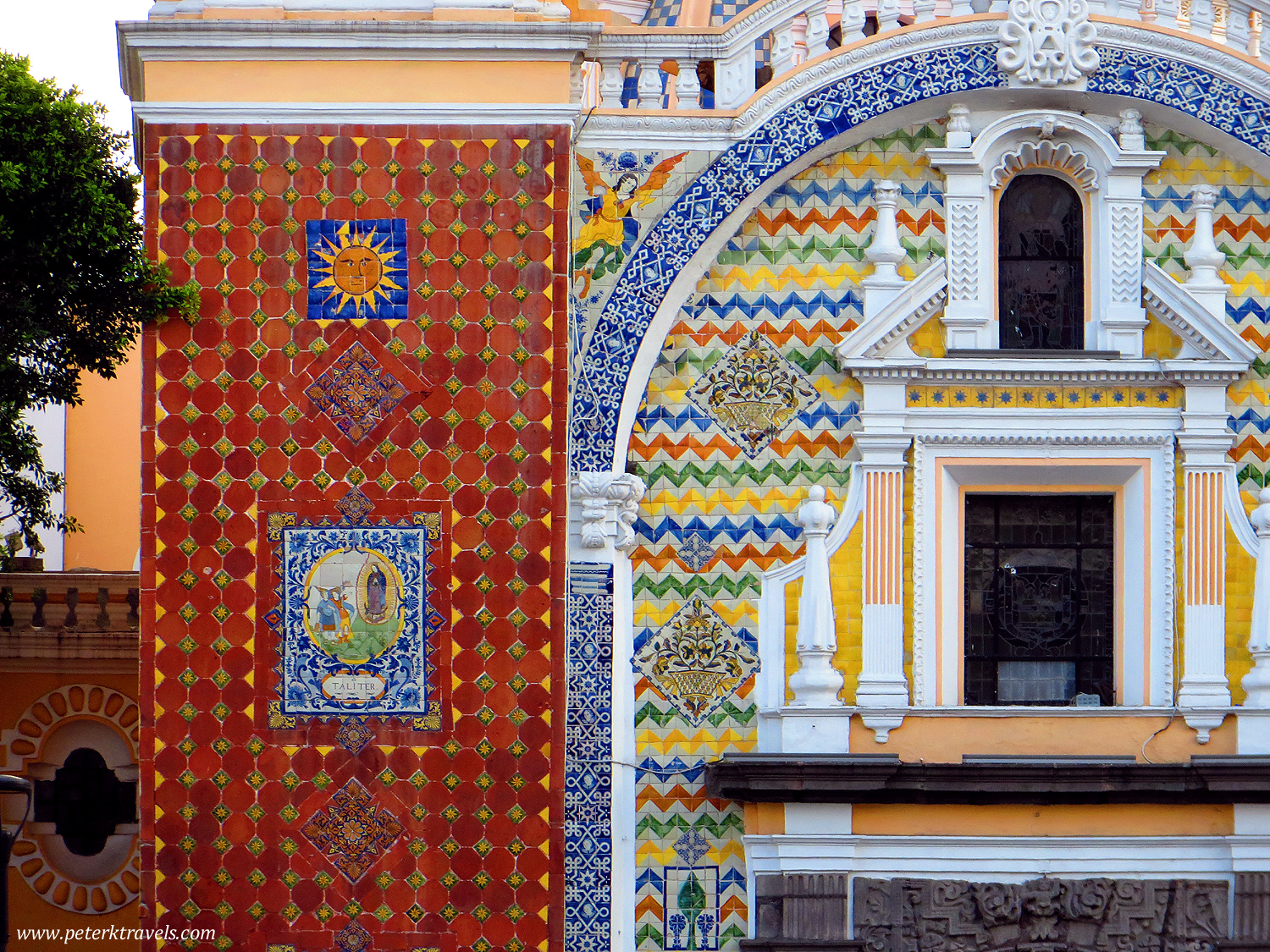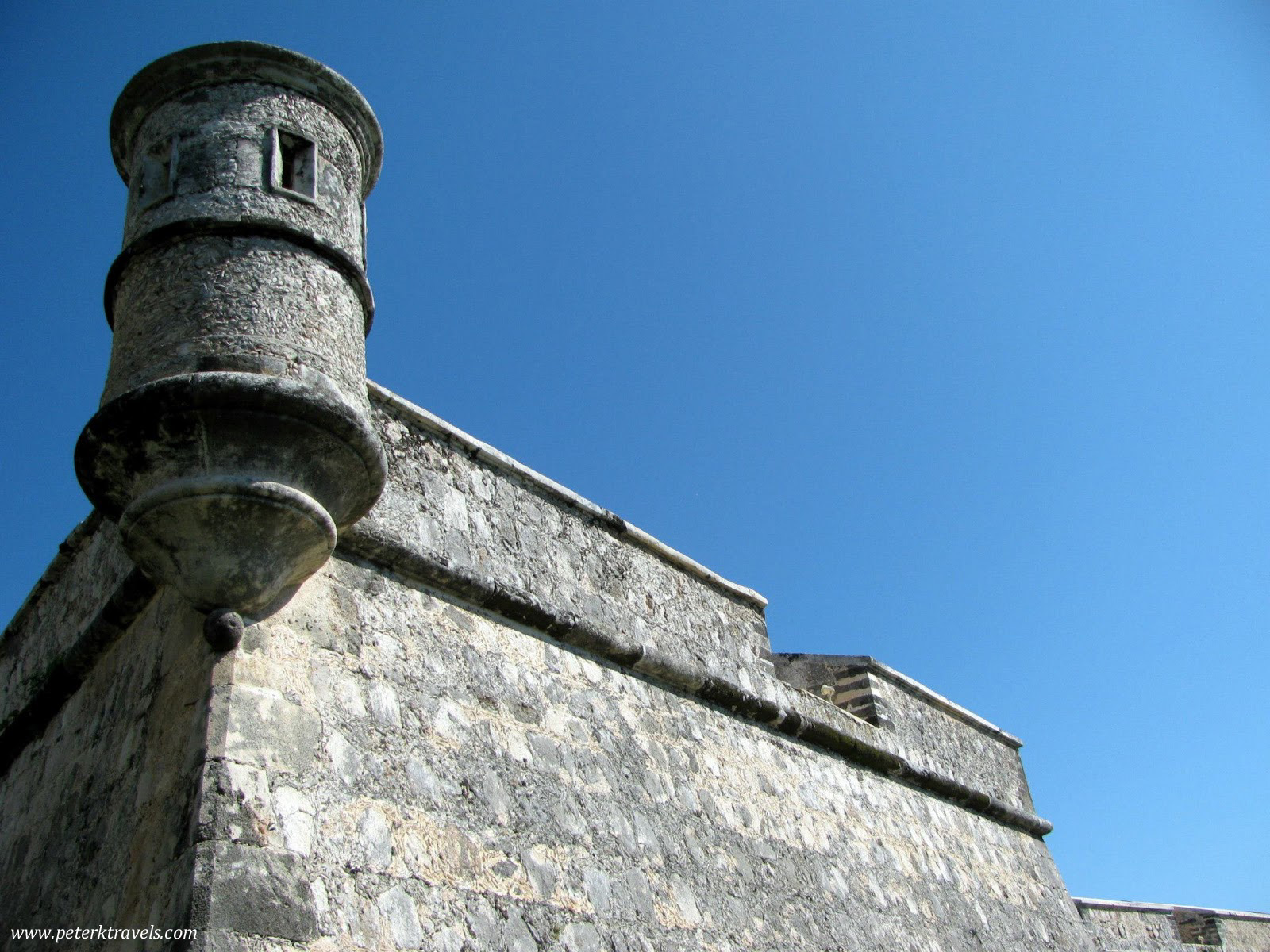Los Fuertes and Cinco de Mayo
During my September 2013 trip to Puebla, I made a point of going to see the forts where the famous Cinco de Mayo battle took place.
After the Mexican American War (1846-48) and two Mexican civil wars (1858, 1860), Mexico was near bankruptcy. President Benito Juarez suspended all payments to foreign creditors. In response, the French sent a fleet to Veracruz to pressure the Mexicans for repayment of loans.
Realizing he had an opportunity to create influence in Mexico, Napoleon III decided to have his forces invade. In December 1861, the French went ashore and began pushing toward Mexico City. The French ran into heavy resistance at Puebla. Resistance was centered around two forts, Loreto and Guadalupe. On May 5, 1862, the superior French forces attacked. Against overwhelming odds, the poorly equipped Mexican army defeated the French forces.
The victory was somewhat short lived. A year later, 30,000 French troops managed to take Mexico City and install Maximilian I as the Emperor. The French rule was also short-lived, lasting only from 1864-67. Eventually, Maximilian was executed, and Juarez retook Mexico City and the presidency.
The Cinco de Mayo holiday has become very prominent and is often celebrated here in the United States. It’s often mistaken as Mexican Independence day, sort of like our July 4. This is not the case, as Mexican Independence day is actually September 16.
The forts, Loreto and Gudalupe, are on top of a hill slightly northeast of the centro. It was a cloudy and rainy day, so I decided to take a cab from my hotel to the forts, tour them, and then walk back to the hotel if the weather got better. My cab driver dropped me at the top of the hill, and I walked to the first fort. Fuerte Guadalupe was not open, so I walked the exterior. I took a few photos, and enjoyed the views over the city of Puebla.
A short walk away, Fuerte Loreto was open for visitors. A $46 peso entry fee gained me access to the fort and the included museum. Loreto was originally a religious site, and a structure has stood there for quite some time. It was fortified and made into a fort in the 1800s. It’s a beautiful structure, and the fort itself is quite visually pleasing. From above, it has a very nice symmetrical shape with curved walls, cannons poking out, etc.
The museum itself has several nice displays. It first focuses on the religious aspects of the site, then moves into the military aspects. Cannons, uniforms, guns, maps, etc, are all displayed for you to enjoy. I was very impressed with the exhibits and the grounds of Fuerte Loreto. Surprisingly, I had the whole place to myself — well, other than a dog who was keeping an eye on things. I didn’t find much information about Fuerte Loreto in the tourist information, it isn’t even mentioned in the Lonely Planet guidebook. I’m glad I took the time to find it and tour it.
In addition to the forts, there are numerous other attractions in the Zona de Fuertes. An INAH museum, a public plaza, a soccer field, and a convention center are all located nearby. There are walking/running paths, and it appeared to be a nice place to exercise. There was very little auto traffic, and the air felt cleaner. I ended up walking down the hill and back to the Centro, it’s not terribly far and was a nice walk.

